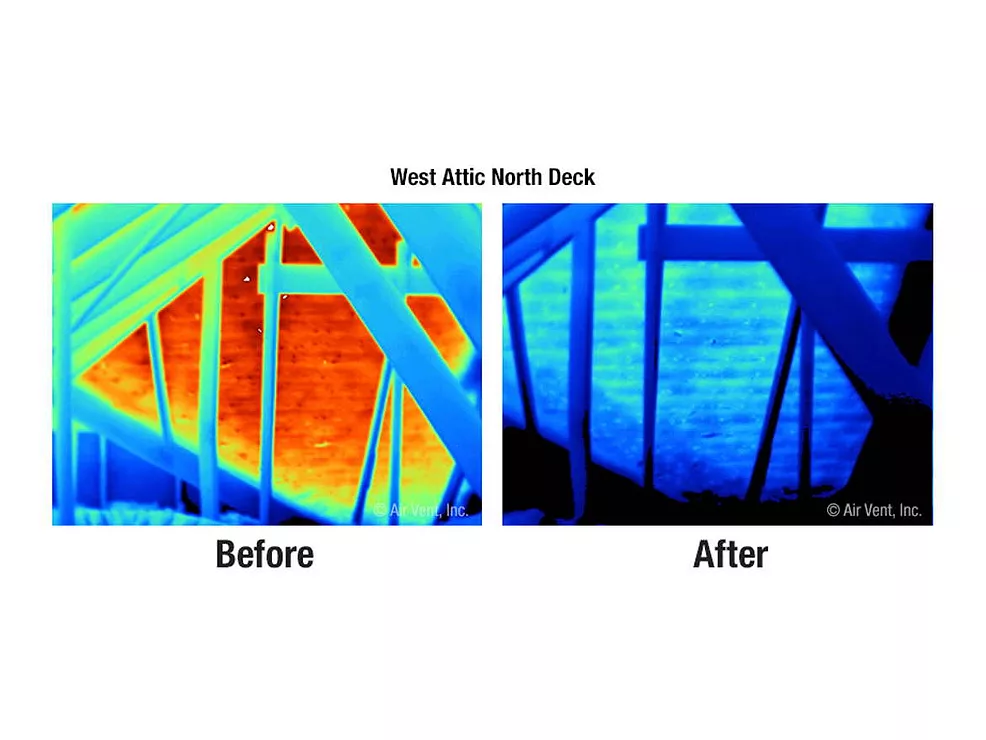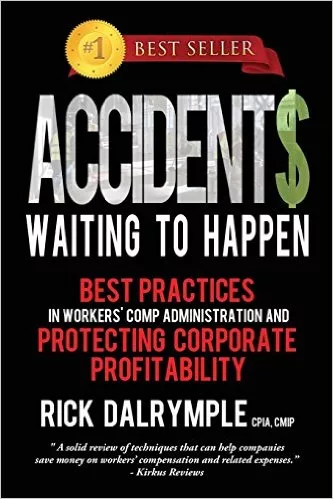Technical Details: Code Changes Could Decrease Damage in High-Velocity Wind Zones
System attachment is the most critical element of roof design and application. Improper attachment results in the increased probability of wind blow-offs and contributes to membrane strain created by differential movement of the system components.
System attachment is the most critical element of roof design and application. Improper attachment results in the increased probability of wind blow-offs and contributes to membrane strain created by differential movement of the system components. The design and application methods must address attachment of the total system and all of the components - substrate, roofing, flashing, metal coverings and penetrations. The most prevalent element that proper attachment will deter is damage from wind force, particularly wind uplift damage.
Wind damage of roof systems primarily initiates at perimeters and corners of the building and infiltrates throughout the field of the system. Generally, wind vortexes occur at the perimeter of the building, displacing perimeter components such as flashings, wood nailers, and metal coverings. This creates openings for wind to enter into the system. The wind transcends through the system in a cross-directional pattern, creating uplift and damage at points throughout the field of the system. Wind uplift also occurs as wind comes up from below the deck. Secondary wind damage can also occur as wind-driven projectiles create punctures in the membrane.
Hurricanes primarily occur in the Gulf and Atlantic costal regions and contribute to widespread damage. Most hurricanes form in the Atlantic as tropical storms; when they exceed 73 mph, they reach hurricane status. There are five levels of hurricanes, which are categorized by wind speeds. Hurricanes are most common between the end of May and the end of November - the official hurricane season.
Tornadoes are characterized as severe squalls with the addition of a funnel (vortex). Wind speeds are high and typically immeasurable. They have been estimated to be between 200 to 300 mph within the vortex. They are most common in the central United States in the spring; however, they can - and have - occurred in other regions and at other times of the year.<
Wind damage to roofs also occurs through membrane punctures created by the impact of wind-driven projectiles. The projectiles typically consist of roof components (metal terminations, flashings, membrane, tiles, etc.) or mechanical equipment displaced in windstorms. In most cases, the projectiles are from adjoining roofs or surrounding buildings that puncture roofs otherwise unaffected by wind damage.
The membrane openings created by these impacts allow for the free flow of moisture into the roof system during the rainstorms that characteristically follow these events. Since the International Building Code states that roof systems with more than 25 percent of wet insulation require roof removal to the deck, the cost of collateral damage from windstorms can be excessive.
The application of impact-resistant membranes would significantly reduce collateral damage to the roofs that illustrated no other signs of wind-uplift damage. Regulations could be implemented utilizing the current ASTM impact-resistance testing standards.
The largest impact that these potential changes could have would be the compliance of the contractor during the application phase. The current wind-uplift requirements are typically only monitored through the design phase. This includes the manufacturer’s system testing, which is conducted in a controlled setting with materials that may or may not be applied on all roof projects. Some roof specifications and designs are reviewed for code compliance. However, there are no current regulations for the verification of the completed system’s attachment methods. Due to the fact that insurance companies will be forced to pay claims on roof systems that possessed improprieties of application, a concentrated effort may begin to verify what they are insuring prior to a catastrophic event.
The costs associated with application verification may be prohibitive due to the scale of the task. However, in a year where the insurance companies are paying billions of dollars for roof damage and associated collateral damage claims (interior repairs, loss of production, temporary housing, etc.), this issue may rise to the top of the agenda. Some insurance carriers have maintained a proactive stance in this area and have existing verification methods in place. The remaining insurers may begin requiring their insured building owners to provide roof system compliance verification as a stipulation of their policy.
Damage would be minimized if all regulations were as stringent as the high-velocity sections of the Florida Building Code. These sections can serve as an effective template for code development, particularly due to the fact that they have been in effect for over a decade. Proper code development requires implementation of standards that address all phases of roofing: design, manufacture and application.
The success of the code will be based on the ability to complete project compliance inspections. Most of the wind-related failures that we have observed over the years were initiated by improper application methods. Typically, project design is reviewed and approved (or rejected) by code agencies prior to construction; however, actual application practices are not always inspected. The primary reason typically stated for this lack of oversight is that the local agencies lack the manpower required too complete such a daunting task. However, other building components - such as structural, electrical, mechanical and plumbing - have required compliance inspections on all facilities. Therefore, additional manpower may not be required; roof attachment inspections could become part of the structural inspections.
Code enforcement should be maintained at the local municipality level and can be monitored through the issuance of mandatory permits for all new and remedial roofing projects, both commercial and residential. The issuance of permits (prior to project inception) can be based on the following criteria:
• ASCE wind uplift calculations are prepared by a licensed engineer for the specific project facility to determine the wind uplift pressure for the facility and to determine the proper attachment requirements.
• Fastener pull-out tests are required to determine the attachment capacity of the existing substrate.
• Materials and/or systems should comply with identified high-velocity wind regulations. This would include - but is not limited to - wind uplift testing and puncture resistance testing.
• Once the permits are issued and the project begins, code compliance can be enforced through mandatory project inspections throughout the course of the project as well as a final inspection.
These proposed changes in the roof attachment codes would minimize structural damage and limit associated human health and safety risks in high-velocity wind events. These code changes would not eliminate all wind-related roof damage, but they would greatly reduce damage initiated by improper attachment methods and flying projectiles. The cost savings realized by these codes for insurance companies, building owners and municipalities (at the state and local levels) could be substantial. The potential savings to human health and safety would be immeasurable.
System attachment is the most critical element of roof design and application. Improper attachment results in the increased probability of wind blow-offs and contributes to membrane strain created by differential movement of the system components. The design and application methods must address attachment of the total system and all of the components - substrate, roofing, flashing, metal coverings and penetrations. The most prevalent element that proper attachment will deter is damage from wind force, particularly wind uplift damage.
Wind damage of roof systems primarily initiates at perimeters and corners of the building and infiltrates throughout the field of the system. Generally, wind vortexes occur at the perimeter of the building, displacing perimeter components such as flashings, wood nailers, and metal coverings. This creates openings for wind to enter into the system. The wind transcends through the system in a cross-directional pattern, creating uplift and damage at points throughout the field of the system. Wind uplift also occurs as wind comes up from below the deck. Secondary wind damage can also occur as wind-driven projectiles create punctures in the membrane.
High-Velocity Wind Classifications
There are four high wind velocity classifications, which range from 39 mph to in excess of 300 mph. The most common type of wind is a gale force wind, which can vary in wind speed from 39 to 72 mph. These types of winds are steady in velocity and have sporadic gusts. Wind forces in combination with thunder, electric storms and heavy rainfall are referred to as squalls. Squalls can range up to 90 mph. Even though gales and squalls have the least amount of wind force of the four classifications, they contribute to over 70 percent of the wind-related claims per year. This is largely due to their common occurrences in most regions of the country.Hurricanes primarily occur in the Gulf and Atlantic costal regions and contribute to widespread damage. Most hurricanes form in the Atlantic as tropical storms; when they exceed 73 mph, they reach hurricane status. There are five levels of hurricanes, which are categorized by wind speeds. Hurricanes are most common between the end of May and the end of November - the official hurricane season.
Tornadoes are characterized as severe squalls with the addition of a funnel (vortex). Wind speeds are high and typically immeasurable. They have been estimated to be between 200 to 300 mph within the vortex. They are most common in the central United States in the spring; however, they can - and have - occurred in other regions and at other times of the year.<
Effects of High-Velocity Wind on Roofs
Wind, especially at high velocity, creates vacuum or negative pressure, lifting the membrane and roof insulation material loose from points of attachment. Wind uplift is severe at the roof perimeter primarily at corners, where it exceeds the normal static pressure against the wall.Wind damage to roofs also occurs through membrane punctures created by the impact of wind-driven projectiles. The projectiles typically consist of roof components (metal terminations, flashings, membrane, tiles, etc.) or mechanical equipment displaced in windstorms. In most cases, the projectiles are from adjoining roofs or surrounding buildings that puncture roofs otherwise unaffected by wind damage.
The membrane openings created by these impacts allow for the free flow of moisture into the roof system during the rainstorms that characteristically follow these events. Since the International Building Code states that roof systems with more than 25 percent of wet insulation require roof removal to the deck, the cost of collateral damage from windstorms can be excessive.
Ensuring Proper Application
Proactive measures are during the design, manufacturing and application phases of a project. Wind-uplift damage can be significantly reduced through the design and implementation of proper roof attachment procedures. Proper roof attachment can be determined in accordance with FM requirements or ASCE standard wind-uplift calculations. The procedure to determine wind uplift pressure rating on specific buildings during the design phase is based a calculation that takes into account the basic wind speed in the geographical area, ground surrounding the building and the roof uplift pressure at the field of the roof. The building’s height and perimeter construction are also considered. It is the responsibility of the specifier to complete these calculations and to determine the proper wind uplift rating for the building. Only materials and systems that meet the calculated uplift pressures should be applied. The calculated pressure is applicable for the roof deck and most above-grade components. However, this procedure only determines attachment rates for the field of the roof. The pressures required for corners and perimeters must be calculated separately.The application of impact-resistant membranes would significantly reduce collateral damage to the roofs that illustrated no other signs of wind-uplift damage. Regulations could be implemented utilizing the current ASTM impact-resistance testing standards.
The largest impact that these potential changes could have would be the compliance of the contractor during the application phase. The current wind-uplift requirements are typically only monitored through the design phase. This includes the manufacturer’s system testing, which is conducted in a controlled setting with materials that may or may not be applied on all roof projects. Some roof specifications and designs are reviewed for code compliance. However, there are no current regulations for the verification of the completed system’s attachment methods. Due to the fact that insurance companies will be forced to pay claims on roof systems that possessed improprieties of application, a concentrated effort may begin to verify what they are insuring prior to a catastrophic event.
The costs associated with application verification may be prohibitive due to the scale of the task. However, in a year where the insurance companies are paying billions of dollars for roof damage and associated collateral damage claims (interior repairs, loss of production, temporary housing, etc.), this issue may rise to the top of the agenda. Some insurance carriers have maintained a proactive stance in this area and have existing verification methods in place. The remaining insurers may begin requiring their insured building owners to provide roof system compliance verification as a stipulation of their policy.
Proposed Changes to the Building Codes
The only way to enact these changes is through the implementation of more stringent codes in all high-velocity wind zones. This would include the Gulf and Atlantic coastal regions and should include inland areas a minimum of 100 miles from the coast. The current codes make reference to the FM and ASCE attachment methods; however, they are primarily enforced in the design phase and the codes do not address project compliance.Damage would be minimized if all regulations were as stringent as the high-velocity sections of the Florida Building Code. These sections can serve as an effective template for code development, particularly due to the fact that they have been in effect for over a decade. Proper code development requires implementation of standards that address all phases of roofing: design, manufacture and application.
The success of the code will be based on the ability to complete project compliance inspections. Most of the wind-related failures that we have observed over the years were initiated by improper application methods. Typically, project design is reviewed and approved (or rejected) by code agencies prior to construction; however, actual application practices are not always inspected. The primary reason typically stated for this lack of oversight is that the local agencies lack the manpower required too complete such a daunting task. However, other building components - such as structural, electrical, mechanical and plumbing - have required compliance inspections on all facilities. Therefore, additional manpower may not be required; roof attachment inspections could become part of the structural inspections.
Code enforcement should be maintained at the local municipality level and can be monitored through the issuance of mandatory permits for all new and remedial roofing projects, both commercial and residential. The issuance of permits (prior to project inception) can be based on the following criteria:
• ASCE wind uplift calculations are prepared by a licensed engineer for the specific project facility to determine the wind uplift pressure for the facility and to determine the proper attachment requirements.
• Fastener pull-out tests are required to determine the attachment capacity of the existing substrate.
• Materials and/or systems should comply with identified high-velocity wind regulations. This would include - but is not limited to - wind uplift testing and puncture resistance testing.
• Once the permits are issued and the project begins, code compliance can be enforced through mandatory project inspections throughout the course of the project as well as a final inspection.
These proposed changes in the roof attachment codes would minimize structural damage and limit associated human health and safety risks in high-velocity wind events. These code changes would not eliminate all wind-related roof damage, but they would greatly reduce damage initiated by improper attachment methods and flying projectiles. The cost savings realized by these codes for insurance companies, building owners and municipalities (at the state and local levels) could be substantial. The potential savings to human health and safety would be immeasurable.
Looking for a reprint of this article?
From high-res PDFs to custom plaques, order your copy today!




